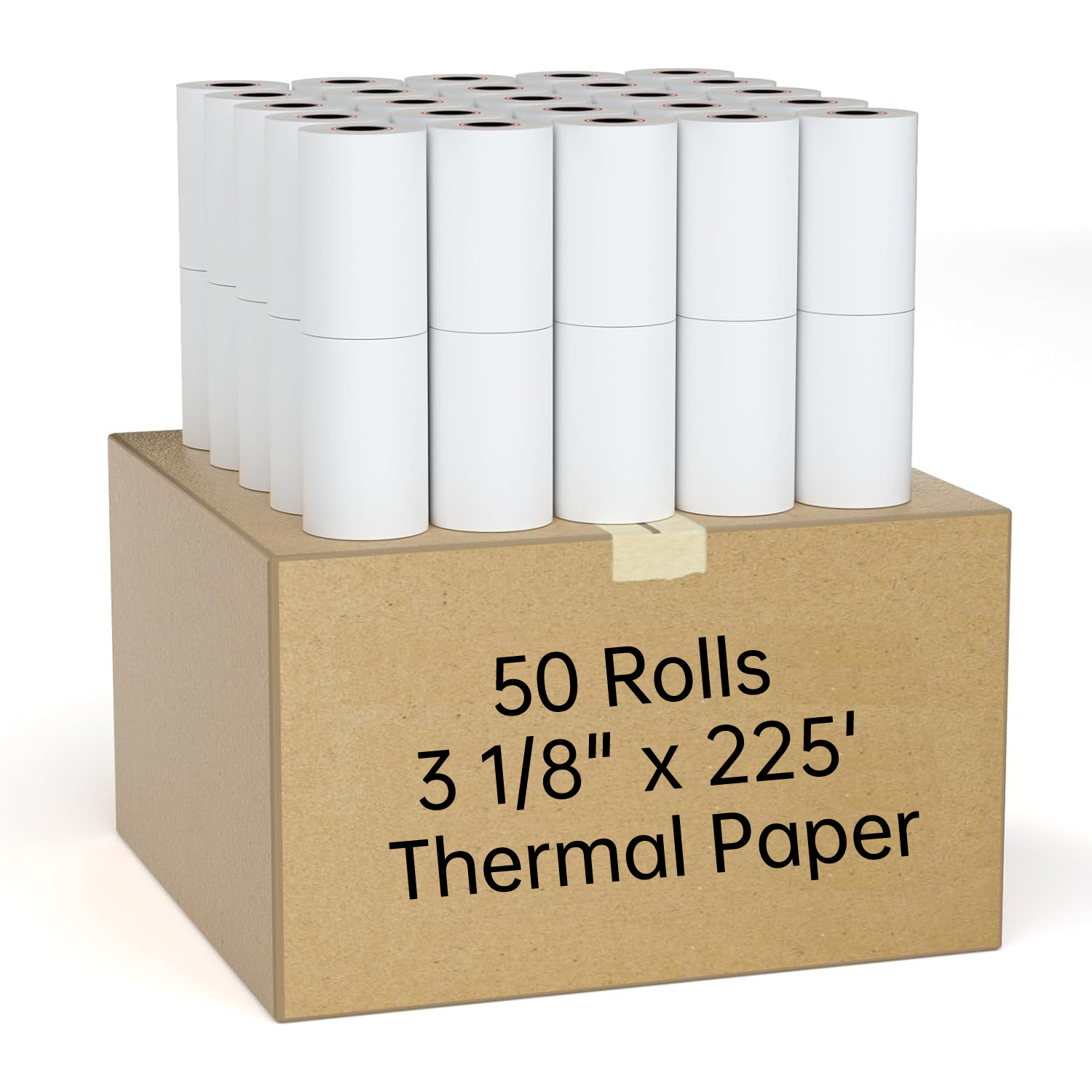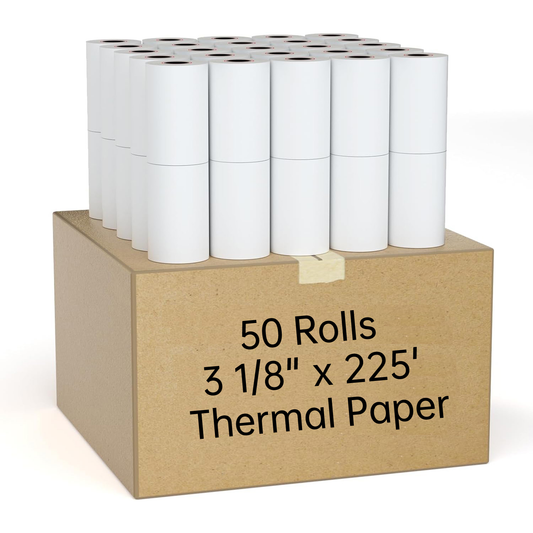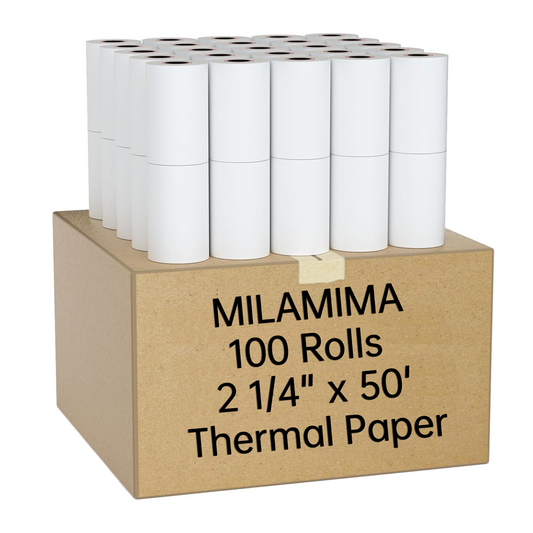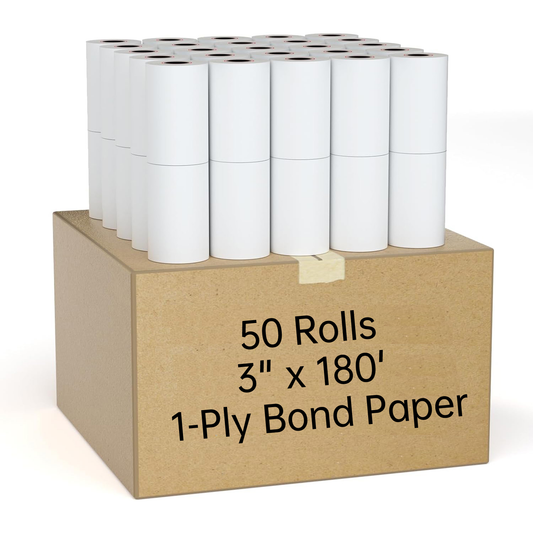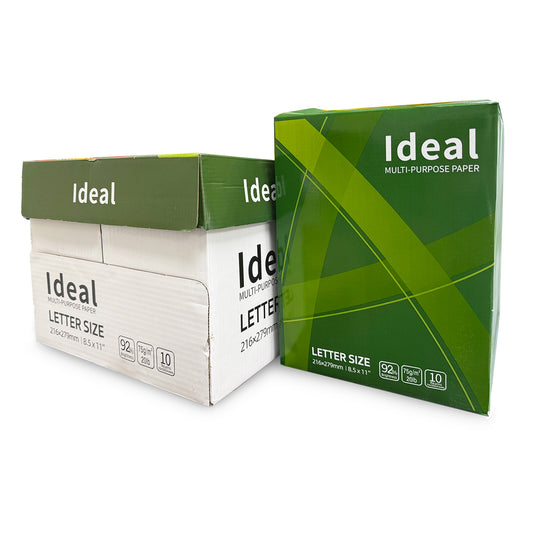Why Is Thermal Paper So Expensive?
In the world of retail and business transactions, thermal paper is a crucial component for printing receipts and maintaining transaction records. Among the various types of receipt paper available, the 3 1/8" x 230 Thermal Paper Rolls are particularly popular for their efficiency and reliability. However, many consumers and business owners wonder why thermal paper is so expensive. In this blog post, we’ll break down the factors that contribute to the high cost of thermal paper and explain why it remains a preferred choice for many businesses despite its price.
1. Advanced Technology and Specialized Materials
The primary reason behind the high cost of 3 1/8" x 230 Thermal Paper Rolls is the sophisticated technology and specialized materials used in their production. Unlike conventional paper, thermal paper features a unique chemical coating that reacts to heat to produce text or images without the need for ink. This coating typically consists of several components:
- Leuco Dyes: Colorless compounds that develop color when exposed to heat.
- Developers: Organic acids like Bisphenol A (BPA) or Bisphenol S (BPS) that interact with leuco dyes to create color.
- Sensitizers: Chemicals that optimize the temperature at which the color develops.
- Stabilizers: Additives that prevent color degradation over time.
These materials are more expensive than those used in standard paper production, and their precise application requires advanced machinery and expert craftsmanship, which adds to the production costs.
2. Sophisticated Manufacturing Process
The manufacturing process for thermal paper involves intricate steps that contribute to its high cost:
- Precision Coating: The thermal paper’s chemical coating must be applied with high accuracy to ensure even heat sensitivity across the entire roll. This requires state-of-the-art equipment and stringent quality control measures.
- Temperature Control: Maintaining precise temperature conditions during the coating and drying processes is essential for producing high-quality thermal paper.
- Regular Maintenance: The specialized machinery used for thermal paper production requires regular maintenance and calibration, adding to the overall costs.
These advanced manufacturing techniques ensure the quality and functionality of thermal paper but also increase the final price of the product.
3. Expensive Raw Materials
The raw materials used in thermal paper production are generally more costly than those for traditional paper. These materials include:
- Specialized Chemicals: Leuco dyes, developers, and sensitizers are high-cost components due to their specialized nature and production processes.
- High-Quality Paper Substrate: The base paper used for thermal rolls must be durable and consistent to withstand the coating process and ensure optimal printing performance.
These premium raw materials are essential for the effective functioning of thermal paper but contribute to its higher price.
4. Market Demand and Supply Dynamics
The price of thermal paper can also be influenced by market demand and supply factors:
- Limited Manufacturers: The production of thermal paper is confined to a few specialized manufacturers with the necessary technology and expertise.
- Demand Fluctuations: Changes in demand for thermal paper, driven by trends in retail and business practices, can impact pricing. For example, increased demand for POS systems or credit card terminals can drive up the cost of thermal paper rolls.
- Raw Material Availability: Disruptions in the supply chain for raw materials, such as shortages of BPA or BPS, can also affect the cost of thermal paper.
5. Environmental Considerations
Environmental factors play a significant role in the pricing of thermal paper:
- BPA Concerns: Bisphenol A (BPA), a common chemical in thermal paper coatings, has been linked to health risks. The push for BPA-free alternatives and more eco-friendly options can lead to higher production costs.
- Sustainable Solutions: Manufacturers investing in environmentally friendly alternatives, such as paper with less impact on the environment, often face higher expenses, which are reflected in the price of the product.
6. Long-Term Benefits
Despite its higher initial cost, thermal paper offers several benefits that can justify the investment for businesses:
- Efficiency: Thermal paper printers are quick and efficient, reducing transaction times and improving customer service.
- Low Maintenance: Thermal printers require no ink cartridges or ribbons, which can lower maintenance costs and minimize downtime.
- Reliability: The technology behind thermal paper ensures high-quality prints and consistent performance, making it a dependable choice for businesses.
Conclusion
The cost of 3 1/8" x 230 Thermal Paper Rolls can be attributed to several factors, including advanced technology, specialized materials, and environmental considerations. The sophisticated manufacturing process and expensive raw materials contribute to the higher price, while market dynamics and the push for eco-friendly alternatives further influence costs. However, the efficiency, reliability, and low maintenance requirements of thermal paper make it a valuable investment for businesses seeking effective transaction documentation solutions.
For more information on thermal paper and to explore our range of business supplies, visit MilaMima.com.



